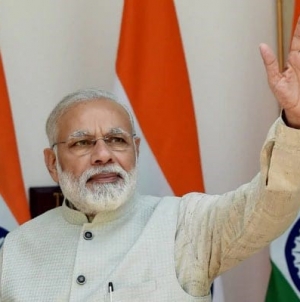-
IRELAND: “From 800 to 7,000”: Ireland’s Education Appeal Soars Among Indian Students - May 4, 2024
-
TORONTO: Canada Sets Weekly Work Hour Limit For Indian Students At 24 - May 3, 2024
-
TORONTO: India strongly protests ‘Khalistan’ slogans at a public event attended by Canadian leaders - May 2, 2024
-
TOKYO: Japan Offers Scholarships To Indian Students Pursuing Research - May 1, 2024
-
ZAGREB: India-Croatia Foreign Office Consultations (FOC) - May 1, 2024
-
BUCHAREST: Government Of Romania To Offer Scholarships To Indian Students - April 30, 2024
-
WASHINGTON: India Now Second-Largest Source Country For New Citizens In US- Report - April 30, 2024
-
LONDON: Run For Modi” Event In London To Drum Up Support For PM Modi - April 29, 2024
-
LONDON: Indian-Origin Candidate On How He Plans To Win London Mayoral Polls - April 28, 2024
-
HARVARD: No Country Is Perfect”: Physics Wallah Urges Indian Students At Harvard, Stanford To Return - April 27, 2024
2020 will be remembered as time of the pandemic. The fallout will be felt for years
The pandemic is unarguably the most
consequential global event of 2020 – a risk publicly anticipated, as recently
as 2019, by US Intelligence. The impact won’t be limited to a year, it
will cascade over at least the next decade. Some changes were already
underway – such as the digitisation of society. The pandemic brought home the
costs of historical failures such as neglect of public health systems, or of
infectious diseases. Finally, the economic response to the shock was a combined
fiscal and monetary stimulus of almost $20 trillion, with unforeseen
consequences lurking in the shadows.
The human cost has been huge. Around
1.76 million have died and almost 80 million cases have been confirmed. The
virus was a social leveller; neither wealth nor power offered protection.
Lockdowns and physical distancing crippled the global economy. A measure of the
damage came from the extent to which the IMF adjusted its projection for
2020, the forecast in January of 3.2% growth being scaled down to a contraction
of 4.4% by October. The cumulative damage could be up to $28 trillion over five
years in relation to the pre-pandemic trend. Millions will slip back into
poverty.
The geopolitical rivalry between the
US and China sharpened with the pandemic. China’s gaming of the global system
had already impacted Western democracies. But this year the blinkers came off
and China, where the virus originated, took a decisive turn to being a malign
hegemon. President Donald Trump was a political victim of the virus and his
defeat may pave the way for the US to again take up a global leadership role,
ending the disarray among Western democracies.
The pandemic marks the end of the
post-Cold War phase of globalisation, characterised by a degree of naiveté. We
are headed towards narrower groupings of the like minded, rather than one where
everyone was welcome in the fond hope of eventual convergence. The
unprecedented medical response through international vaccine development showed
the importance of collaboration. But that still leaves the world with an
unanswered question. If in 2020, our choices unleashed a zoonotic disaster,
there is a bigger challenge ahead. Climate change needs global collaboration
and compromise. Will geopolitical rivalry still provide space to combat a
shared threat? The average surface temperature has already increased by 1°C
since the Industrial Revolution, and tipping points loom.























